We were pretty busy doing some super cool stuff in 2020. Here’s a video documenting some of our super-awesome triumphs.
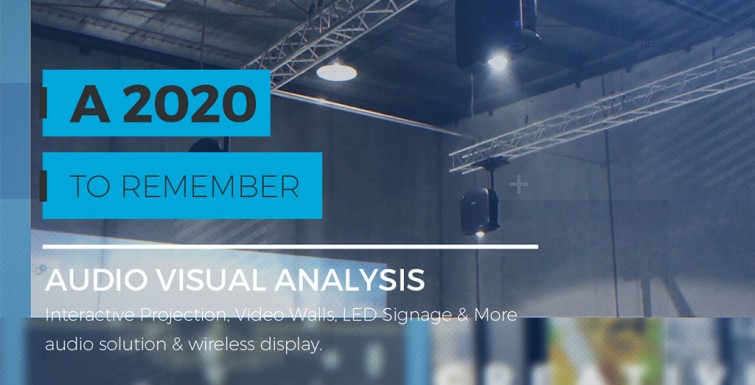

We were pretty busy doing some super cool stuff in 2020. Here’s a video documenting some of our super-awesome triumphs.
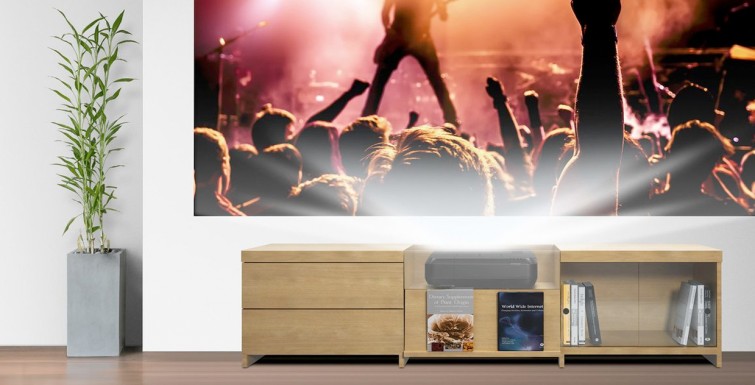
The following article has been re-posted from thehonestfacts.com.
An up to date business intelligence report compiled at the headquarters of Transparency Market Research (TMR) has notified that the shares in global interactive projectors market are fragmented and the competition is intense. The analyst of the report has detected that the major players of the interactive projectors market are focused on harnessing new technologies and making an impression their consumers to stay ahead of the curve. The report has identified BenQ Corp., Seiko Epson Corp., Dell Technologies Inc., Touchjet Inc., Optoma Technology Inc., Panasonic Corp., Sony Corp., Hitachi Ltd., NEC Display Solutions Ltd., and Boxlight Mimio as a few players who held moderately prominent positions in the global interactive projectors market as of 2018.
If the projections of the TMR report are to be believed, the global interactive projectors market will attain a value of US$5.97 billion by the end of 2025, with the demand multiplying at a steep CAGR of 21.80% during the forecast period of 2018 to 2025. Application-wise, the education sector is currently providing for the most substantial chunk of demand in comparison to corporate and government. In terms of product type, the interactive projectors market has been bifurcated into standard throw, short throw, and ultra short throw. The latter has been identified to remain most profitable.
The Asia Pacific interactive projectors market is forecasted to expand at an above-average CAGR of 24.30% during 2017 to 2025, which is a reflection of growing number of small and medium enterprises and government funding for the educational sector.
Striking advantages over conventional projectors is the primary driver of the growing demand for interactive projectors. The advanced projectors are ideal for e-learning, a trend that has been flourishing in the recent past. These projectors allow a teacher and more than one or two students to interact via the same screen simultaneously.
Check out our Epson interactive projectors here: EB-695Wi, EB-696Ui, EB-700U, EB-710Ui.
Contact us at sales@visionone.com.au for more information.
Last week, the team at Vision One visited Integrate in Sydney to learn more about the innovative range of upcoming technologies for the audio visual and information technology industry.
We checked in with our usual favourites and browsed through everything from holographic imaging technology to larger-than-life indoor and outdoor signage panel displays. Our pals at Quantum Sphere showed off their new Kaptivo Whiteboard Camera while the guys at Epson blew us away with their new range of lasers and and LightScene projectors.
The big take-aways from this year? Lamps are slowly disappearing from projectors, pixel pitches are smaller than ever, and if your conferencing and collaboration solution doesn’t play nice with every software platform, you’re in for a world of trouble!
Take a look at some of the highlights in the video walkthrough above!
We’ve done a couple of pretty cool things so far in 2018. Check out our 3D Photo Gallery Video to learn more!
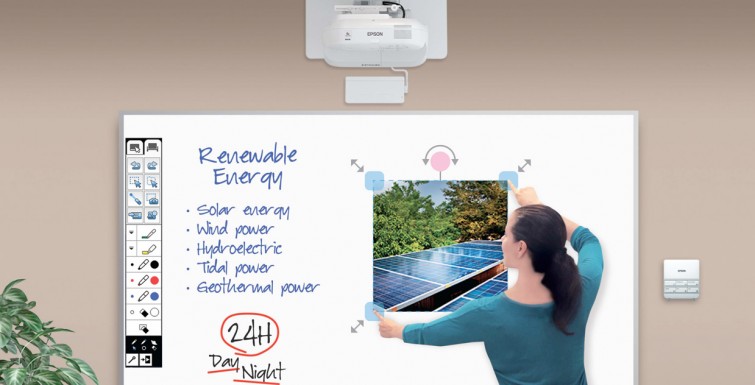
Epson’s interactive projectors in schools are all about making learning more engaging. With a lot of experience producing interactive education projectors, it’s no wonder that education institutions are abandoning interactive whiteboards, large format projectors and display panels in favour of Epson’s interactive projectors.
Better value and more versatile, an interactive projector provides a fuss-free all-in-one solution that makes education a more collaborative and fun process than ever before.
So what makes Epson’s interactive projectors for Melbourne and Australian schools, classrooms, boardrooms and meeting rooms so great?
Interactive projectors are all about encouraging collaboration. Take Epson’s popular EB-695Wi projector; it uses two interactive pens, which allows a teacher and a student – or ten students – to write on the same screen at the same time. Responsive and easy to use, these pens also have a ‘hover’ function that accurately detects when they are not in contact with the projection surface. These interactive projectors encourage collaborative learning by placing the teacher and student at the front of the room in an inclusive and constructive environment. Whether you’re connecting to the projector wirelessly or via hard cables, you’ll be able to annotate, write and draw over any laptop and/or in-built document.
Epson’s ushering-in of a new era of interactive projectors goes beyond collaboration to achieving an advanced smart learning platform for schools. Using the Epson iProjection app for tablets and smartphones, a teacher can annotate the onscreen image from a mobile device, and so can students. Not only can you project content from smart devices, but the PC-free annotation whiteboard mode means that teachers don’t even need to power up their computers. You can also download and install your own finger-touch-compatible apps to your PC or tablet device, using Epson’s interactive projection technology to engage and foster a developing academic environment.
Another string to the interactive projector’s bow is its ability to annotate directly onto videos in class, which is an increasingly important part of the content mix in schools and colleges. Whether you’re playing a video directly from YouTube or streaming from your local hard drive, Epson’s interactive projectors make it easier to discuss video clips as part of any teaching curriculum.
For many institutions a big advantage of installing interactive projectors in Melbourne is that no other upgrade is needed; existing whiteboards or interactive whiteboards can stay because interactive projectors can project an image onto any surface. So exciting, yet simple is the technology that it’s likely that, at first, many students will want to see exactly how their classroom’s new interactive projector works.
Epson’s expertise in projection, and the development of its own powerful 3LCD system, means that image quality from these products is second to none. Projecting a White and Colour Light Output of up to 4,200 ANSI lumens, images are crisp, vibrant and colourful – and, crucially, remain so even in bright daylight.
A learning experience that’s more involving and more fun is always going to increase students’ motivation and produce better results. Hugely versatile interactive projectors help achieve this by broadening the possibilities for teachers’ classroom methods. Teachers are limited only by their imagination and their commitment to taking advantage of the technology’s features. Epson’s interactive projectors are rapidly being adopted throughout education, and the reasons are as simple as the products’ design and features. Is there any more exciting use for new technology than to help encourage collaboration and engagement in learning?
If you’d like to learn more about how Epson interactive projectors can benefit your Melbourne school or business, contact Vision One today on (03) 9467-3777.
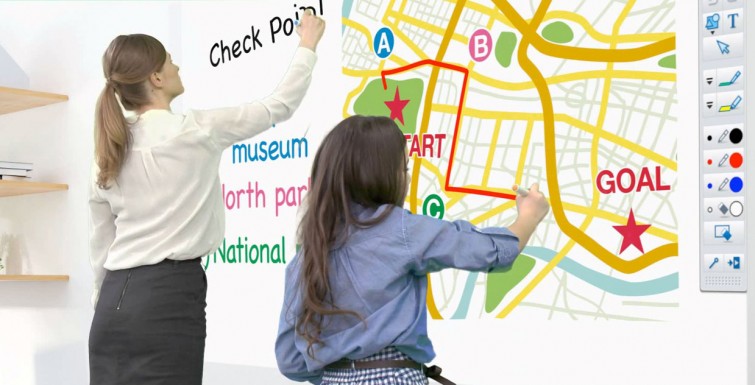
A requirement for upgraded AV capabilities saw Christchurch New-Zealand-based St Margaret’s College turn to imaging solutions specialists Epson, with the Epson EB-485Wi and EB-585Wi interactive ultra-short throw projectors chosen to be utilised acrossed the school.
Blake Richardson, technical systems manager at St Margaret’s College, says the school required upgrades for two main reasons.
“Due to the Canterbury earthquakes, we lost over 80% of our buildings and secondly the projectors we had were a mix of new and old from various manufacturers,” Richardson explains.
Richardson and his team evaluated all the current projectors on the market that would meet St Margaret’s high standards.
“After the earthquakes a new campus plan was drawn up which included three new classroom blocks and the renovation of a fourth block,” he says. “Our requirements meant that the projectors all be the same brand, of particularly high quality and that they fully met the purpose for which they would be used.”
St Margaret’s College uses projectors in every one of their learning spaces, so a bright and clear image was essential, Richardson says.
The EB-485Wi and EB-585Wi are reliable interactive projectors packed with innovative interactive features.
“We were particularly impressed with the high quality of the image and the low cost of replacement lamps for both EB-485Wi and the EB-585Wi projectors. We also really liked the fact that these projectors allowed us to do away with our Interactive White boards and give each classroom the same features.”

“We use the EB-485Wi and the EB-585Wi ultra-short throw projectors in all of our learning spaces and these provide a nice bright and clear image,” Richardson says. “Our large boarders dining room has an Epson EB-X14 installed, which is used for internal and external events. We also have two Epson EB-G5750WU installation projectors attached to a HDMI matrix in our auditorium and an Epson EB-G6250W which projects onto our large cyclorama screen. “
He adds, “We are very happy with all of the Epson projectors we have chosen and feedback from our staff and students is very positive.

“Our new EB-485Wi and the EB-585Wi ultra-short throw projectors work very well in the classroom and are a massive improvement from our older projectors.”
The EB-595Wi projector is Epson’s flagship interactive projector model, and is the world’s first 3LCD, finger touch-enabled interactive projector, ideal for the classroom environment. Epson are also the leaders of interactive projectors in the market.

The EB-595Wi boasts better brightness, up to 3,300 lumens allowing the screen to be easily viewed from anywhere in a classroom without dimming lights, increased contrast ratio (now 10,000:1) and longer lamp life (up to 6,000 hours in ECO mode), giving better cost efficiencies and savings.
The EB-595Wi offers digital connectivity including two HDMI ports with one port supporting MHL (Mobile High Definition Link) for mirroring connectivity with Android mobile devices.
There is also wireless projection when used with an optional LAN card (using peer to peer wireless and Epson’s EasyMP Network Projection software) and projector control using multi-PC projection software with a Moderator function, which enables up to 50 devices to connect to the projector and the managing and controlling of up to four images displayed on the screen. In terms of audio there is a 16W built-in speaker with enough audio power to fill most classrooms and advanced networking capabilities for when users need to monitor, control and present from a remote location. There is no driver installation required for PCs.
The EB-595Wi projectors take Epson’s ultra-short throw interactive projectors range up a further notch with not only finger touch-enabled interactivity but also PC Interactivity. Epson’s latest and enhanced PC interactive software Easy Interactive Tools provides an intuitive user interface and enhanced interactive features.

The interactive EB-595Wi offers dual pen interactivity enabling teacher and student to annotate at the same time. The smaller pen that comes with selectable function side button and a new on-screen projector control tool bar that allows users to power OFF, switch sources, zoom in and out and turn the volume up and down.
All Epson projectors, including both the EB-485Wi and EB-585Wi projectors are based on superior 3-chip LCD technology, giving vibrant realistic colours, high quality detail and solid reliability.
Epson projectors also 3LCD engines that have no colour wheel with a white segment which, in practical terms, means Epson projectors have up to 3x brighter colours than their leading competitive 1-chip DLP projectors
Video caption: The new Science Teaching and Student Services building at the University of Minnesota will have 10 Active Learning Classrooms. Active Learning Classrooms allow for students to experience a more interactive and conversational educational environment. With round tables for discussion and high-tech accessories for interactivity, these classrooms will service more than 125 class sections this fall.
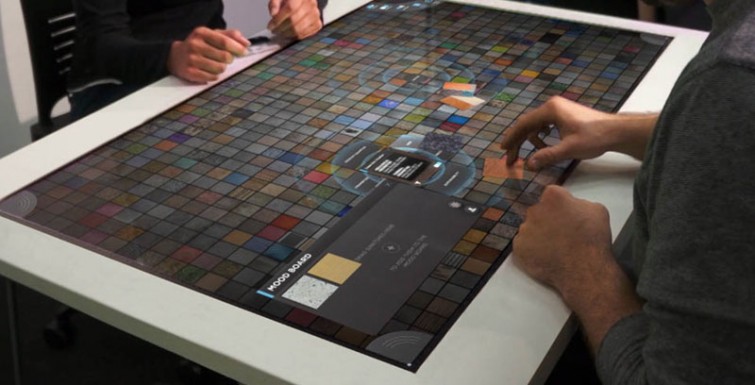
An interactive presentation system combines the simplicity of a whiteboard with the power of a computer so a teacher or business person can deliver dynamic lessons or presentations and annotate in realtime. Students or audience members can interact with the system, making it a focal point for collaborative learning or working, especially with the advent of multi-touch technology enabling several people to use it simultaneously.
Interactive displays
The key component of an interactive presentation system is an interactive display, usually either a flat-panel display or an interactive whiteboard (IWB). IWBs contain a short-throw projector that projects content from a connected computer on to a touch-sensitive surface.
Interactive flat panels are large, touch-sensitive screens that display content from a computer or media player which may be built-in via an OPS slot. Traditionally they have used optical sensing technology, but infrared is starting to replace this as it copes better with bright ambient light and requires less maintenance.
Flat panels and IWBs do essentially the same job, so one or more users can interact simultaneously with specialist, interactive software bundled with the device or bought separately. The display may be controlled with a separate panel or via the teacher/presenter’s tablet or smartphone.
As flat panel prices fall 55-65in is becoming the entry-level size, with up to 98in now becoming available. HD resolution is the norm and 4K Ultra HD is becoming common for large displays (84in and over); however, availability of 4K content is limited, and viewers may not notice much difference on any but the largest displays. Toughened glass can increase durability in challenging environments such as schools, while displays made of thin, zero-parallax glass that promises more accuracy of touch are starting to appear.
Multi-touch functionality, enabling several people to touch the screen at once, is becoming popular: anything from 10 to 60 simultaneous touches is possible, although for most applications four to eight is sufficient. Motion sensors and voice-activated operation will also become available in 2015.
Software is increasingly becoming a point of differentiation for vendors, with features including creation and playback of lessons and presentations, in-session collaboration, handwriting recognition and the ability to save annotations. Optional extras can include video conferencing integration, BYOD (bring your own device) support, and integration with visualisers and audience response systems.
Loudspeakers are often built-in, otherwise external, USB models can be used. Some interactive displays also have integrated webcams to enable remote participation, and network connectors so they can be controlled remotely.
IWB vs flat panel
IWBs still account for much of the installed base, and generally remain cheaper than large-format flat panels. However, they are rapidly losing market share to flat panels which overtook them in sales in 2014. Flat panels’ back-lit LED technology lasts longer, uses up to 90 per cent less energy, and generates less waste heat so there is no noisy fan and no dust filter to maintain. Image quality tends to be sharper and brighter, and there are no issues with a projected image being obstructed.
Flat panels also tend to be slimmer and neater than IWBs, easier to install and seldom require expert calibration (either on installation or during use). Best of all they have no expensive lamp to fail and need replacement, so both downtime and ownership costs can be considerably lower.
Who is buying?
The main purchasers of interactive presentation systems are schools, with up to 90 per cent penetration in the most saturated markets, such as the UK. Higher education offers more potential for sellers, and many school IWBs are being replaced with smaller, cheaper-to-run flat panels as image quality improves and purchase costs fall.
Businesses are also starting to take a serious interest, as their employees become more au fait with touch technology and costs continue to fall. Sectors range from government and healthcare to technology, manufacturing, pharmaceuticals, finance, retail and even churches.
Training and meetings are the most popular applications, but presentations and events are gaining ground. Buyers’ priorities can differ significantly, however. Businesses tend to want simplicity and rich features, while schools are more concerned about durability and the quality of the interactive experience.
Specification and implementation
Reliability and availability are critical for most buyers, since lessons or presentations may grind to an embarrassing halt if the technology fails. A good, on-site warranty is therefore de rigueur (schools may opt for five years plus), and displays must be designed for professional, not domestic, use.
Compatibility with software, PCs, portable devices, visualisers, voting systems and other technology (planned or already in use) needs to be verified before purchase. The growing trend towards BYOD may necessitate support for operating systems such as Android, iOS and Windows RT and WP.
Matching the technology to the space requires skill and effort – not just with regard to the size, shape and ambient light levels of the room but also the way the technology will be used. A proper scoping exercise and site survey are therefore recommended. Interactive displays can also be heavy, so they require strong mountings on a solid wall.
User training is often overlooked, and many interactive presentation systems are never used to their full potential because users do not know how. Users need to be briefed beforehand on why the technology is being bought and what it can do, then trained in its operation once installed and provided with ongoing support.
Visualisers
Also called document cameras, visualisers comprise a high-quality digital camera mounted on a movable arm that connects to a computer, projector or interactive display. Small, low-cost, portable models are most common, but more permanent ceiling mounted and ‘platform’ models are available.
When linked to an interactive display the visualiser gives the audience a close-up view of any object placed in front of the camera. The teacher or presenter may also be able to zoom in and out, spotlight all or part of the image, record and annotate images and video, compare live and recorded images via a split screen, and freeze an image on-screen when the object is removed.
Audience response
A voting or audience response system enables teachers and presenters to ask questions of an entire class or audience and analyse the results – as well as giving the audience something more engaging to do than playing Candy Crush on their phones.
The basic components are some software and a computer to run it on, plus users’ handsets and a base station. Questions may be asked ad hoc or pre-prepared in formats ranging from game shows to exams.
Audience members respond by pressing buttons on handsets. The software can record responses of individual voters – useful for a teacher, say, to judge which students understood the lesson – and produce statistics for the whole group, compiling reports and displaying instant feedback. The functionality of keypads varies widely and extra features such as text displays, memory and microphones can be expensive, so it is important to establish a genuine need.
There is a growing trend to enable audiences to use their own tablets or smartphones via an app, or even to supply them with cheap, disposable units that do not have to be collected in after the event. As an alternative to separate audience response systems, interactive display systems are increasingly able to support collaborative learning and working via BYOD devices.
See how BenQ interactive technology make learning more fun and enjoyable. With BenQ interactive projectors, PointWrite and supported software, every classroom is an educational play land.